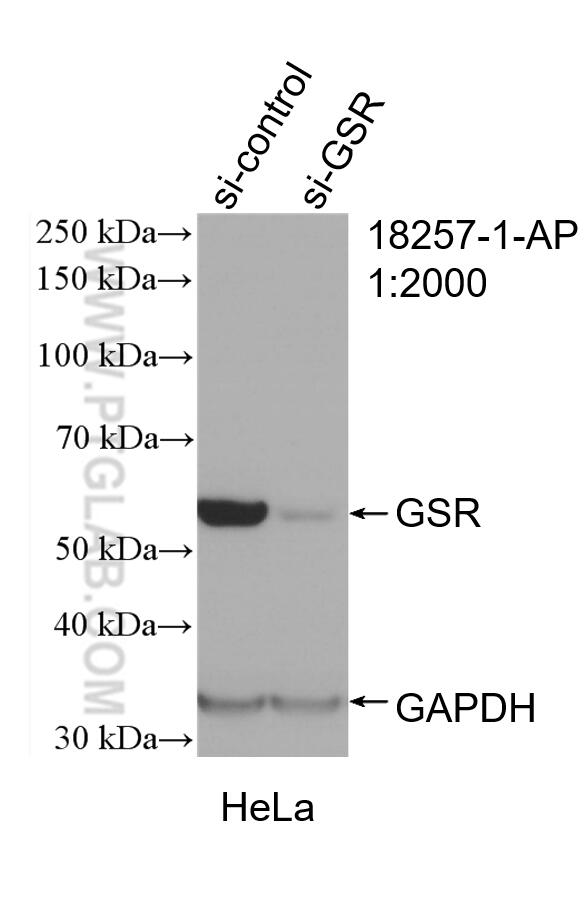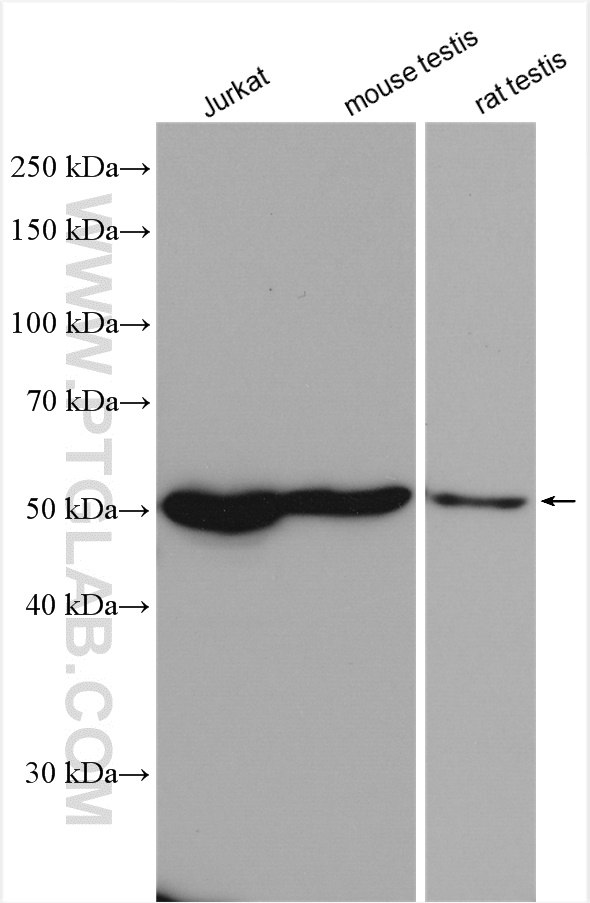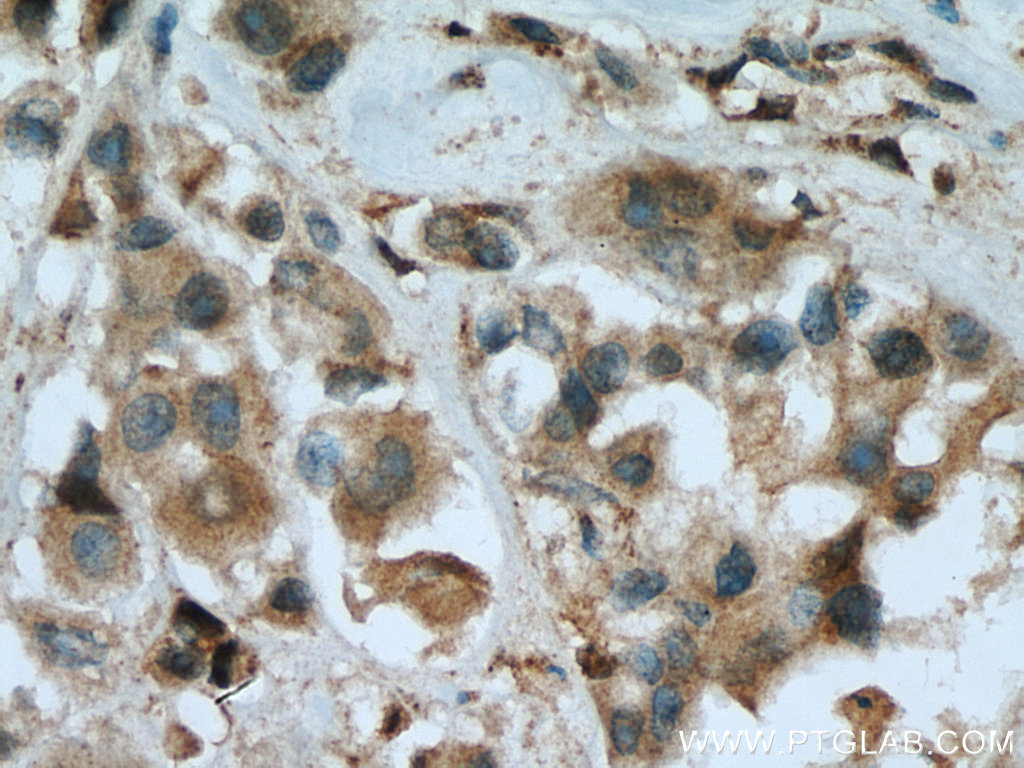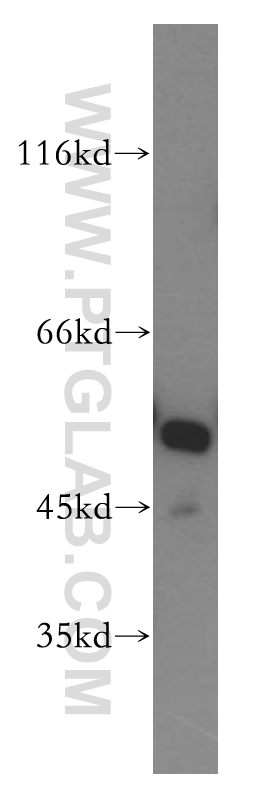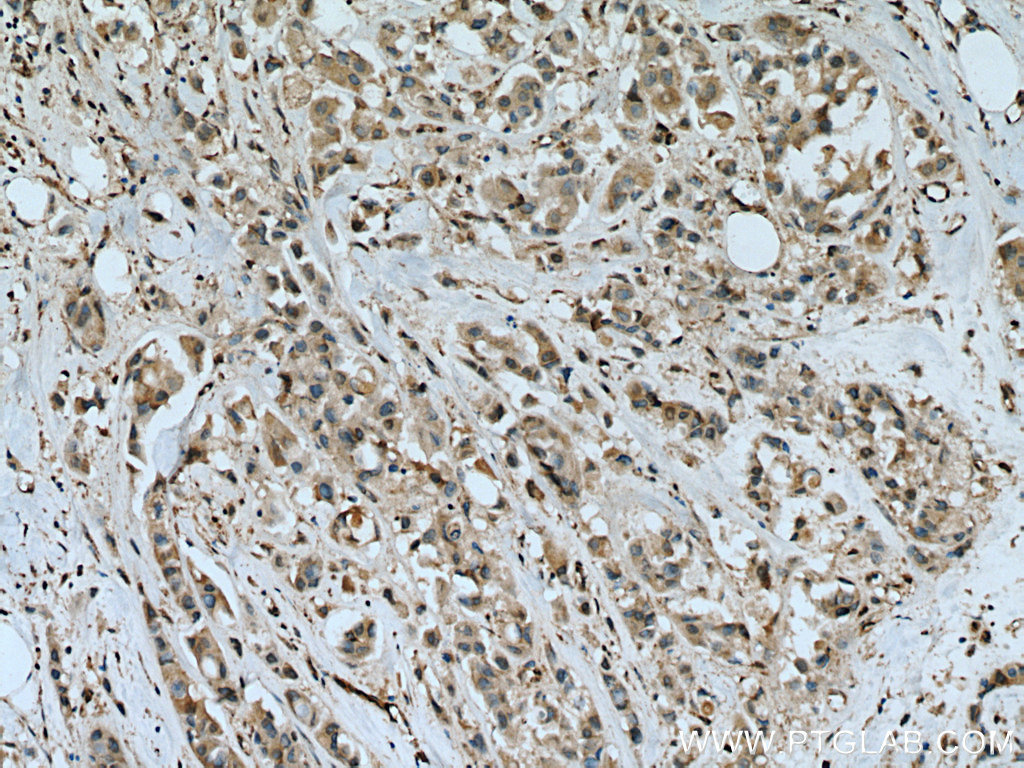验证数据展示
经过测试的应用
| Positive WB detected in | Jurkat cells, HeLa cells, mouse lung tissue, human placenta tissue, mouse testis tissue, rat testis tissue |
| Positive IP detected in | HeLa cells |
| Positive IHC detected in | human breast cancer tissue Note: suggested antigen retrieval with TE buffer pH 9.0; (*) Alternatively, antigen retrieval may be performed with citrate buffer pH 6.0 |
| Positive IF/ICC detected in | HeLa cells |
推荐稀释比
| 应用 | 推荐稀释比 |
|---|---|
| Western Blot (WB) | WB : 1:1000-1:4000 |
| Immunoprecipitation (IP) | IP : 0.5-4.0 ug for 1.0-3.0 mg of total protein lysate |
| Immunohistochemistry (IHC) | IHC : 1:200-1:800 |
| Immunofluorescence (IF)/ICC | IF/ICC : 1:50-1:500 |
| It is recommended that this reagent should be titrated in each testing system to obtain optimal results. | |
| Sample-dependent, Check data in validation data gallery. | |
产品信息
18257-1-AP targets GSR in WB, IHC, IF/ICC, IP, ELISA applications and shows reactivity with human, mouse, rat samples.
| 经测试应用 | WB, IHC, IF/ICC, IP, ELISA Application Description |
| 文献引用应用 | WB, IHC, IF |
| 经测试反应性 | human, mouse, rat |
| 文献引用反应性 | human, mouse, rat |
| 免疫原 | GSR fusion protein Ag13080 种属同源性预测 |
| 宿主/亚型 | Rabbit / IgG |
| 抗体类别 | Polyclonal |
| 产品类型 | Antibody |
| 全称 | glutathione reductase |
| 别名 | GRD1, GRase, glutathione reductase, GLUR, EC:1.8.1.7 |
| 计算分子量 | 522 aa, 56 kDa |
| 观测分子量 | 52-55 kDa |
| GenBank蛋白编号 | BC069244 |
| 基因名称 | GSR |
| Gene ID (NCBI) | 2936 |
| RRID | AB_10598162 |
| 偶联类型 | Unconjugated |
| 形式 | Liquid |
| 纯化方式 | Antigen affinity purification |
| UNIPROT ID | P00390 |
| 储存缓冲液 | PBS with 0.02% sodium azide and 50% glycerol , pH 7.3 |
| 储存条件 | Store at -20°C. Stable for one year after shipment. Aliquoting is unnecessary for -20oC storage. |
背景介绍
GSR(Glutathione reductase) is also named as GLUR, GRD1 and belongs to the class-I pyridine nucleotide-disulfide oxidoreductase family.It was first found in a black American a variant red cell GSR characterized by greater electrophoretic mobility and enzyme activity per unit of hemoglobin than the normal.This protein maintains high levels of reduced glutathione in the cytosol.It has 5 isoforms produced by alternative splicing and alternative initiation.It can also exsit as a homodimer with the molecular weight of 110KDa(PMID:8631352).This antibody is specific to GSR.
实验方案
| Product Specific Protocols | |
|---|---|
| WB protocol for GSR antibody 18257-1-AP | Download protocol |
| IHC protocol for GSR antibody 18257-1-AP | Download protocol |
| IF protocol for GSR antibody 18257-1-AP | Download protocol |
| IP protocol for GSR antibody 18257-1-AP | Download protocol |
| Standard Protocols | |
|---|---|
| Click here to view our Standard Protocols |
发表文章
| Species | Application | Title |
|---|---|---|
Redox Biol Fast regulation of the NF-κB signalling pathway in human skeletal muscle revealed by high-intensity exercise and ischaemia at exhaustion: Role of oxygenation and metabolite accumulation. | ||
Cell Rep The Ets transcription factor GABP is a component of the hippo pathway essential for growth and antioxidant defense. | ||
Nutrients A Mango Leaf Extract (Zynamite®) Combined with Quercetin Has Exercise-Mimetic Properties in Human Skeletal Muscle | ||
Pharmacol Res Phyto-sesquiterpene lactones DET and DETD-35 induce ferroptosis in vemurafenib sensitive and resistant melanoma via GPX4 inhibition and metabolic reprogramming. | ||
Free Radic Biol Med Glutaredoxins concomitant with optimal ROS activate AMPK through S-glutathionylation to improve glucose metabolism in type 2 diabetes. | ||
Free Radic Biol Med Antioxidant defense in quiescent cells determines selectivity of electron transport chain inhibition-induced cell death. |
